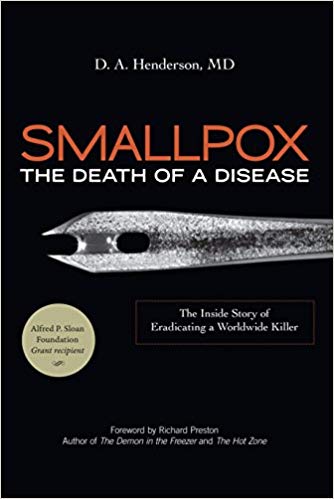Smells And Feelings Tug On The Brain’s Habenula, Or ‘Little Rein’
 Smells and emotions tug on the mind’s habenula, or ‘little rein’
Smells and emotions tug on the mind’s habenula, or ‘little rein’
The image exhibits the forebrain (high half) and midbrain (backside half) or a juvenile zebrafish. The habenula (cyan) are the tiny nuclei in the course of the 2 huge buildings. Credit: Stephanie Fore
A tiny region in the middle of the brain plays a far more vital role than previously identified in serving to it reply to modifications in the setting, a new study reveals.
This area is named the habenula, a reputation that reflects its directional position. Habenula means “little rein” in Latin, and a rein, after all, is the leather strap on a horse’s bridle used to direct it.
The research, performed by researchers at the Norwegian College of Science and Know-how’s Kavli Institute for Methods Neuroscience, was printed Friday in the scientific journal Present Biology.
The researchers, with first creator Ewelina Bartoszek, did their experiments in zebrafish, but the habenula is so necessary that evolution has ensured it’s found in all vertebrates, from fish to mammals to humans. Actually, earlier studies in humans have found links between dysfunctions within the habenula to neurological situations comparable to temper issues and habit.
Kavli Institute researchers confirmed that the habenula relays information from the outside world, such as odor and sight, together with internal states associated with emotions and studying, to the mind regions that control adaptive behaviors.
“It seems that the habenula is an info hub,” stated Emre Yaksi, a professor at NTNU’s Kavli Institute for Programs Neuroscience and head of the research group that did the examine. “It integrates details about odors from the setting with the knowledge from the limbic system , which is involved in emotional behaviors and studying.”
Credit score: Norwegian University of Science and Expertise
Translating signals from the skin into alerts
In other words, the mind could also be in one state when the smell of a predator—or meals, or a mate —wafts into the nose and reaches the habenula. The habenula interprets that scent right into a sort of alert or saliency signal to shift the mind into a special state, Yaksi said.
“We argue that the habenula helps the brain to stop sure actions and communications throughout brain areas , to be able to shift it to another mode that is higher suited to the scenario that the scent warns of,” he mentioned. “The brain’s completely different modes contain different dynamic networks that best enable the animal to resolve the challenges that it’s about to expertise.”
The research highlights how vital our sense of smell—or in additional scientific terms, the olfactory system—is in regulating what happens in the habenula and the limbic system, throughout these sensory-induced state adjustments in the mind.
Discovering ‘ancestral’ constructions
Another important side of the examine, Yaksi mentioned, is that the experiments allowed the researchers to determine elements of the zebrafish mind which are “ancestral” to the hippocampus and amygdala in mammals.
In humans, the hippocampus is understood to play a key position in our sense of the place we are and our reminiscence, while the amygdala is the world that helps process recollections and emotional responses, such as fear.
“We additionally showed that these are the most important cortico-limbic systems that drive the habenula,” Yaksi mentioned. The researchers had been actually capable of observe this connection in zebrafish by stimulating the constructions and seeing exercise in the habenula, he stated. This finding is particularly important as researchers proceed to unravel the totally different roles that totally different parts of the mind play in cognition.
The researchers suggest that given the function of the habenula in regulating moods and brain states, sensory experiences would possibly present a non-invasive pathway to change habenular exercise, maybe even in people.
Discover further
Quotation: Smells and emotions tug on the brain’s habenula, or ‘little rein’ (2021, August 20) retrieved 20 September 2021 from –
This doc is topic to copyright. Other than any honest dealing for the aim of private study or research, no part could also be reproduced with out the written permission. The content is provided for information functions solely.
Use this kind when you’ve got come throughout a typo, inaccuracy or would like to send an edit request for the content on this web page. For common inquiries, please use our contact kind For basic feedback, use the general public feedback section under (please adhere to tips ).
Thank you for taking time to provide your feedback to the editors.
Your suggestions is essential to us. Nevertheless, we don’t guarantee particular person replies as a result of high volume of messages.
Your electronic mail deal with is used only to let the recipient know who despatched the e-mail. Neither your address nor the recipient’s address can be used for some other objective. The knowledge you enter will appear in your e-mail message and is not retained by Medical Xpress in any kind.
Get weekly and/or each day updates delivered to your inbox. You may unsubscribe at any time and we’ll never share your details to third events.
Subscribe have a peek at these guys
Science X Day by day and the Weekly Electronic mail Publication are free options that allow you to obtain your favorite sci-tech information updates in your electronic mail inbox
This website uses cookies to assist with navigation, analyse your use of our companies, gather information for ads personalisation and supply content from third events. By using our site, you acknowledge that you have learn and perceive our Privateness Policy and Phrases of Use


